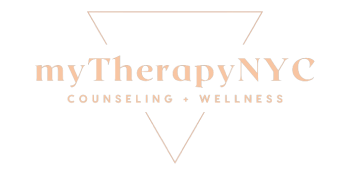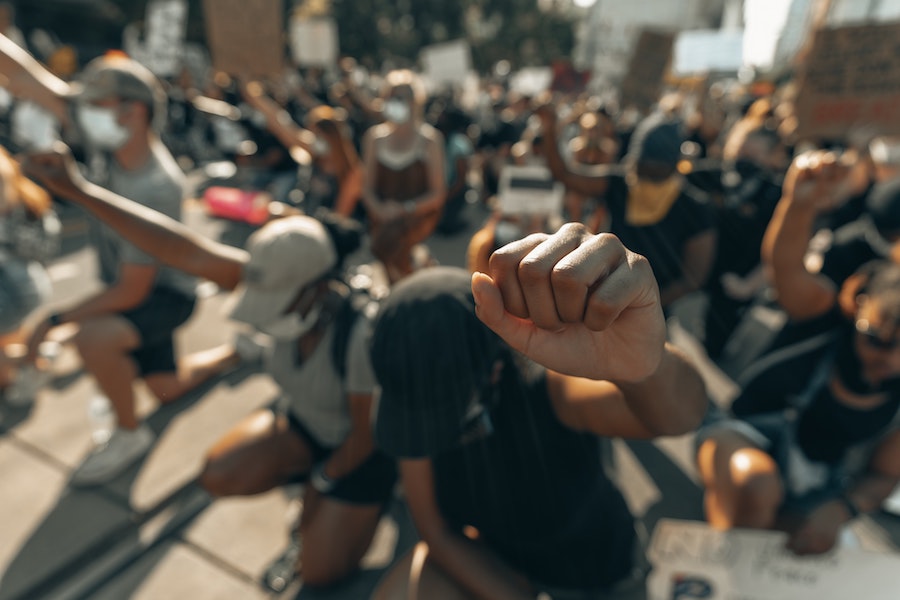It is no surprise that talking about racism can be uncomfortable. When diving into a topic that holds centuries of painful history, emotions are bound to arise. As a white person, I know firsthand how easy it is to ignore racism. I have the ability to overlook the painful and maddening experiences that people of color deal with every day. However, I also realize that overlooking is what has kept racism alive in all it’s hidden and insidious forms. But what do you do when you are talking with someone who still seems set on overlooking racism? If you are white, you almost certainly have friends or family members who don’t seem to think racism is an issue. In this blog, I will give suggestions for how to talk about racism with people who don’t think it’s a big deal.
Talking about racism is emotional
First, I want to acknowledge why racism can be hard to talk about. It is no mystery that talking about racism is often emotionally-charged. For people of color, racism is of course painful and, from what I understand, a day-to-day experience. These day-to-day experiences are not always overt forms of racism, like being called a slur or being subjected to racialized violence. Those overt forms of racism, which are difficult to overlook, are not the whole picture.
The way racism plays into daily life can show up in many less visible ways. A shopkeeper follows you around. You are overlooked for raise or promotion at work. You are denied an application on an apartment with no explanation. A doctor talks down to you. You are terrified that a routine encounter with the police could lead to being arrested, beaten, or killed. These and many other experiences are forms of racism. All of these experiences are painful, and rightly so. When you don’t experience these day-to-day forms of racism yourself, it is easy to turn a blind eye.
For white people and others with racial privilege, the topic of racism can bring a lot of emotions too. There’s the guilt that you aren’t subjected to these experiences just because of how you look. The frustration that there is little you can do as an individual to fix the greater problem. The anger that can come from acknowledging that the privileges you enjoy almost all come at the expense of someone else’s well being. None of these are particularly pleasant things to feel. And a component of racial privilege is having the choice to not feel these things if you do not want to. But choosing this makes you a poor ally to your fellow human beings.
Racism and defenses
A psychological defense mechanism (or “defense” for short) is something that we do in order to avoid a feeling. Defenses can take many forms. Changing the subject or avoiding a conversation is a defense. Putting all the blame on one person for a complex problem is a defense. Numbing out by getting high or drunk may be a defense too. When it comes to the discomfort of talking about and acknowledging racism, defenses can play a big role. Avoiding, minimizing, and deflecting are common defenses that play into conversations about racism. Paired with racial privilege, defenses help people to wiggle their way out of facing their more uncomfortable feelings about racism.
A place to start can be looking at how these defenses show up in conversations about race. Phrases like “racism is over,” “everyone is just too sensitive these days,” or “you can’t say anything without someone being upset” are all likely coming from a defensive place. When someone is in “defense mode,” they are probably feeling protective of themselves in some way. When a person is not acknowledging the impact of racism, it may be because to do so would be painful. It may be difficult for them to reconcile these truths with their view of themselves as a good person. In cases like this, there may be an opportunity to reframe this way of thinking.
Using curiosity
One reason defensiveness can derail a conversation is because defensiveness is usually contagious. When two people don’t agree on something, one person getting defensive usually leads to both people getting defensive. And this makes sense. When we feel attacked, we want to attack back. I know when I hear a phrase like “racism isn’t a big deal,” I feel angry immediately.
A good communication skill for dealing with defensiveness is using curiosity. “What makes you think that?” “Can you explain that more?” “What do you mean by that?” “Do you think that is always the case?” Any of these questions can be useful for when you feel a defensive impulse.
There are a couple of reasons curiosity can be helpful here. One reason is that it shows that you are interested in giving the other person a chance to share their point of view. Rather than moving in immediately to debunk what they are saying, you are giving them a chance to explain it first. If they feel heard, they may be more open to listen. Another reason curiosity can help is that sometimes people who hold these views haven’t actually engaged with exploring them before. Because the topic is painful, many people try not to think about it too much. By asking questions that prompt them to explain why they believe what they do, they may bump into some of the flaws in their logic without you needing to do it for them.
A third reason to use curiosity is that it gives you some emotional space. Being curious keeps the focus on the other person. This can buy you some time to think about how you want to respond. This can reduce the chance of responding impulsively or ineffectively and regretting it later.
Using self-disclosure
Another good skill for conversations like this is self-disclosure. By this, I mean talking from your own point of view. In conversations about racism, it can be tempting to focus on the other person’s way of thinking and trying to convince them they are wrong. Unfortunately, this rarely works because they are likely to feel attacked and to get – you guessed it – defensive. Though your feelings are valid, it may be more effective to express them in a different way.
With self-disclosure, you can share your own feelings and experiences about the matter with them. For example, you can let them know how you feel about the impact of racial biases. Or describe how your own friends have been impacted by racism and how you feel about it. You can describe how you might feel if you lived in fear of yourself or your children being killed during a routine police encounter. You can also share with them your feelings about their point of view. Saying something like, “I feel so ______ (sad/angry/etc.) hearing you say that,” can be a more disarming alternative to saying, “you are wrong.”
Another great way to use self-disclosure is to share any way you might relate to the other person. This can be particularly useful when addressing something like internalized racism or implicit bias. It can be a hard pill to swallow to realize that we all have racist thoughts, particularly when you view yourself as a good person. By sharing that you also fall into thinking in stereotypes or making assumptions about people based on their skin color can help to normalize this for others. Many people from older generations may truly believe that they are not racist or that racism has ended except in the views of extremists. By sharing the ways that you also struggle with internalized racism, you may open the door for them to see this differently.
An example of self-disclosure
An example of this could be sharing that you sometimes feel fear when you pass by a group of Black men on the street. You may not want to feel this fear, but it just happens. But you choose not to assume that the fear is an appropriate response. In fact, you know that it is something that you acquired by the way Black men are stereotyped and depicted in movies, on the news, and in other media. This isn’t a fear response you acquired to keep you safe from a real threat. It is one you acquired by being exposed to racist depictions of Black men as dangerous. And, if you were a police officer, having this response without the awareness of its origin could make you dangerous. Sharing this kind of experience with others could be eye-opening.
Know your limits and boundaries
The tips given in this blog are most likely to be effective when talking to someone who has some openness to a different perspective. The unfortunate reality is that there is no guarantee that these conversations will work. Some people are not open to seeing things differently. When these are people with whom you are deeply connected, this can be a painful experience.
If the conversation goes okay, you could consider sending them a book or other resource as a follow up. If you feel that the conversation is not going well, it may be best to end it. This could mean taking a break and coming back to the topic, or ending the conversation altogether. In that case, you may need to establish a boundary with that person. This boundary could be a request that they refrain from talking about race when you are around. Or, in some cases, it could mean that you are no longer open to continuing the relationship with them. This is particularly important if the person you are talking to is speaking to you in attacking or abusive ways. This is also a real demonstration of how important the topic is to you, which may invite them to re-examine their views.
Read a review of the book ‘How to be an Antiracist’
Racism is an inherently emotional conversation topic. When emotions are high, it can be difficult to stay grounded and present. If you are a person who cares about others’ experiences of racism and want to help others to care about this too, I hope the tips in this blog can help you to navigate those conversations. Staying curious and disclosing your own feelings and experiences can be a good way to navigate any defensiveness that comes up. That said, not every conversation will go the way you hope. If you find that the conversation is feeling futile or even hurtful, it may be time to take a break or set a boundary.
Are you struggling with navigating ideological differences in relationships with family or friends? Individual therapy can help you to develop new skills around communication and boundary setting.
How have you effectively communicated about racism with others who do not share your views? Join the conversation in the comments below!
- How to Help a Friend in an Abusive Relationship - January 12, 2023
- What is the Relationship Between Trauma and Addiction? [Video] - November 29, 2022
- What is New Relationship Energy and How Do I Manage It? - October 27, 2022






5 comments
Thank you for this incredibly important blog post, Weston. You gave some helpful tips in dealing with defensive people when talking about a topic that I think we need to talk about more.
Bravo Weston! This blog is well written. I appreciate your authenticity & transparency. I particularly agreed with your point regarding openness. People have to be open to obtaining a new perspective and if they aren’t boundaries might need to be put in place.
Weston! This blog is well structured and compassionate in the way the topic of race is being brought to light. As a reader, the way you brought about awareness hug readers rather than jump out at us [am I a good person]. Amazing examples Weston with tapping into readers subconscious behaviors and thoughts by sharing real life examples of actions/ feeling people may have/ feel surrounding racism. Then you go on to share different approaches that are mild in nature but rather impactful! Great work Therapist. Let’s get this therapist a raise!
thx for speaking for us POC, yt boi
Thank you for sharing, Weston. I love the mention of self-disclosure, especially. Acknowledging our own implicit bias and sharing our own experiences addressing it can model vulnerability and understanding for others.